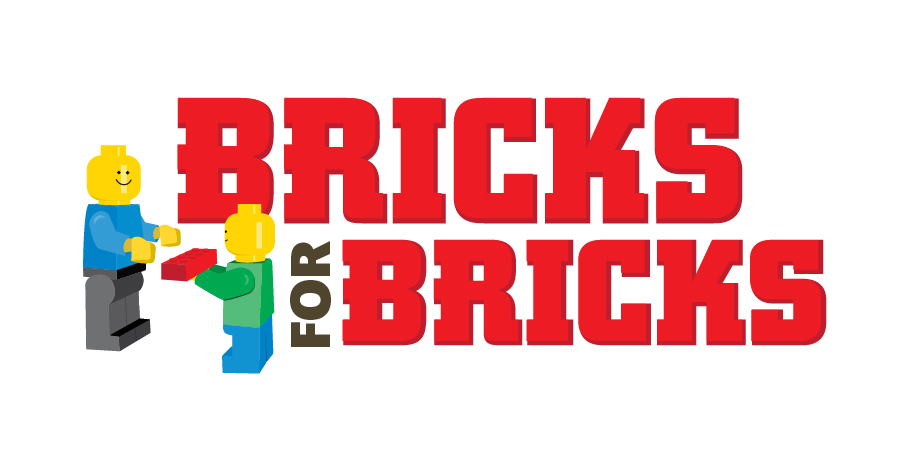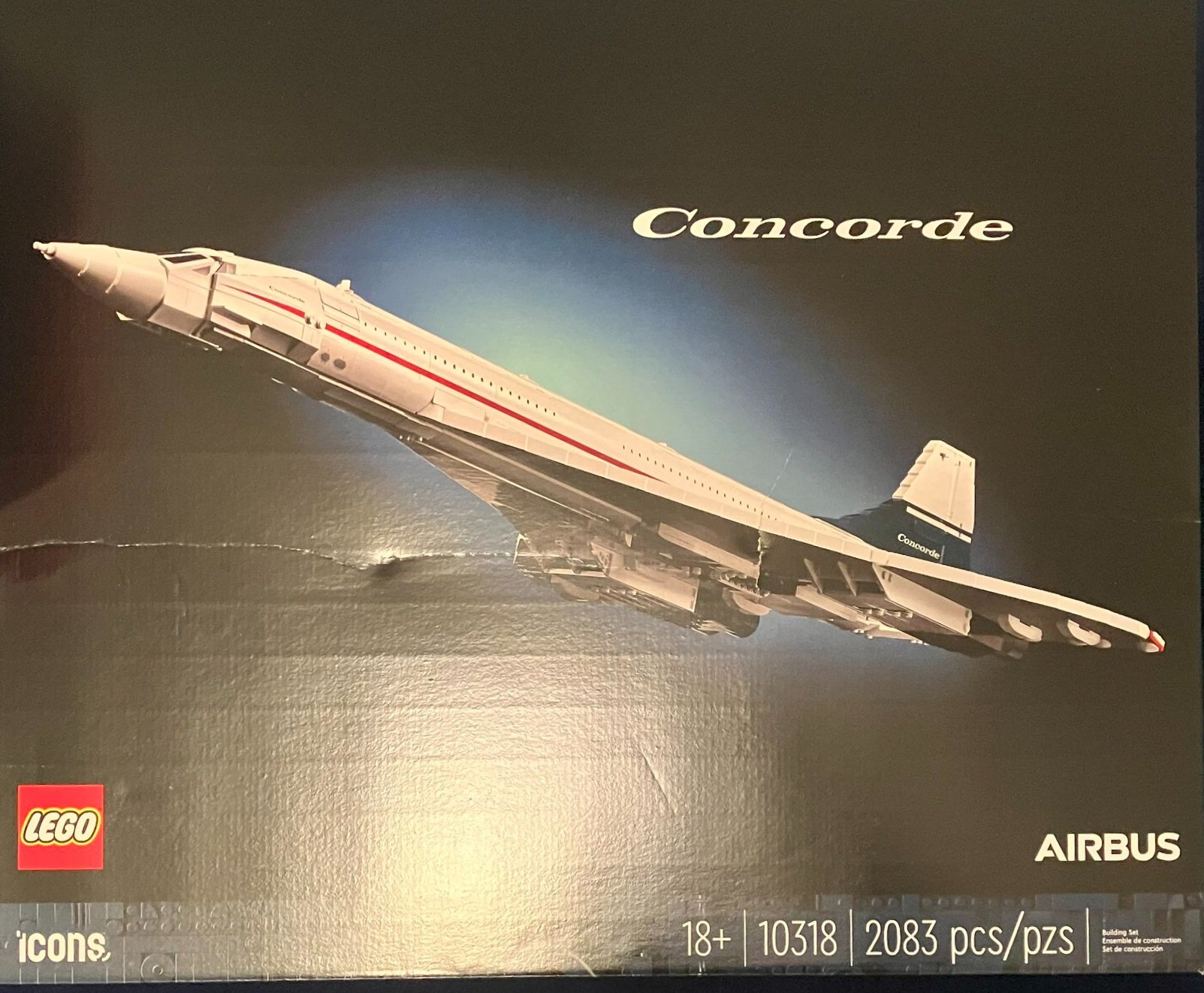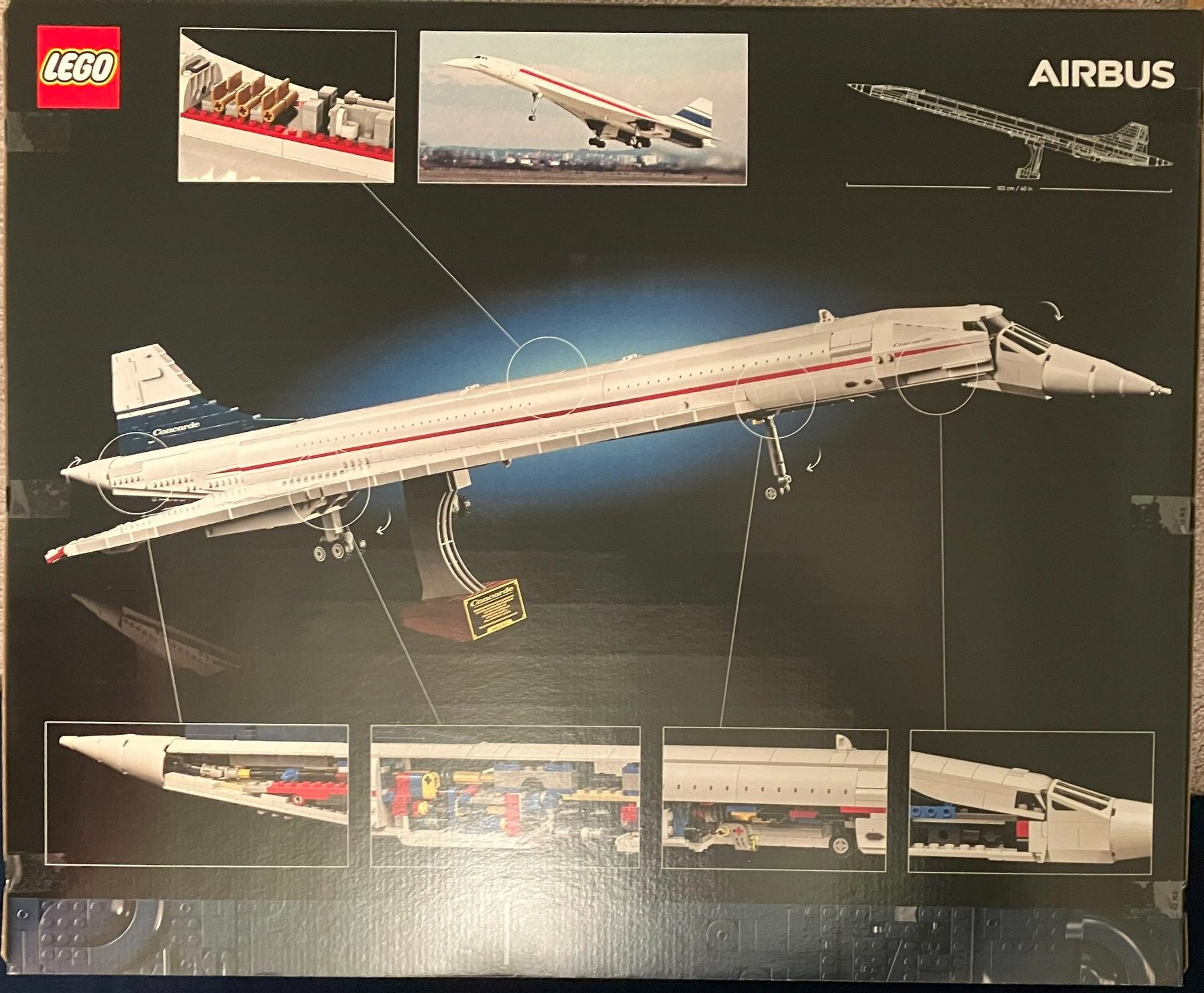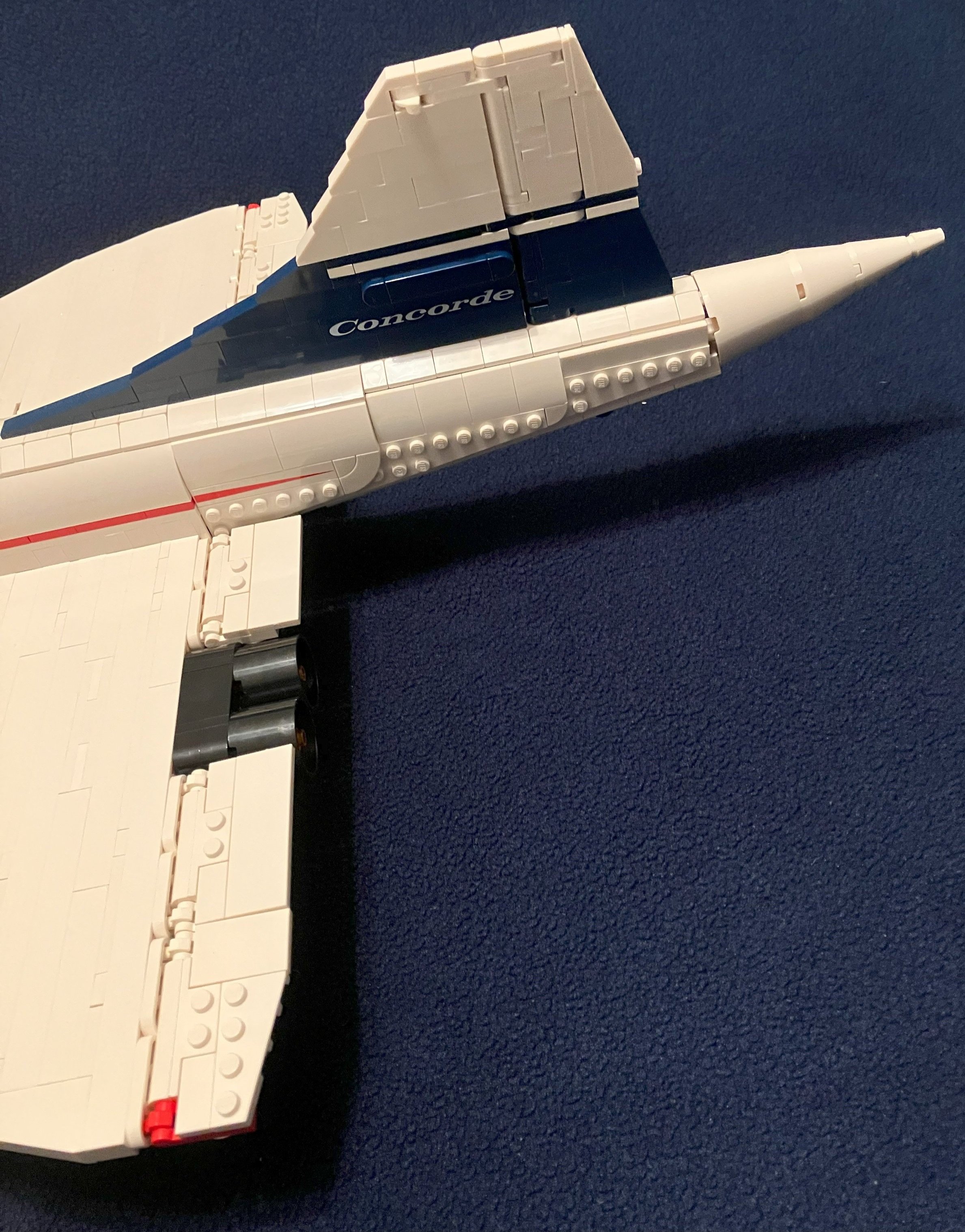LEGO has gone into some different directions over the past few years and this set is another venture into something we haven’t seen before. #10318-1: Concorde is a model of the first supersonic, commercial airliner the world has seen. This set was released in the US on 4 September 2023. It contains 2,038 pieces and retails for $199.99. At that price, it works out to $0.096 per piece which is right about the 10 cent per piece average we all tend to use as acceptable for a set.
I ordered my set online from LEGO Shop @ Home. It arrived in it’s own box with some damage to the shipping box that caused damage to the set box (thanks UPS!). Nothing major and the set was still intact, but kind of disappointing.
The front of the box shows the full set built minus the stand. It has the set name printed in the same font as printed on the aircraft. It also contains the Airbus logo. The box back includes some cut aways of the set to show what it looks like inside the various parts of the set. It also has a diagram showing the length of the set and a picture of the actual aircraft.
The set contains 12 parts bags and then another box inside with more parts bags. In the end you get 21 numbered parts bags with one bag per number. You also get a paper bag with the cockpit wind screen. This is my first look at the new paper bags. They look okay to me. I’m glad LEGO made the switch to something a little more Earth friendly. The instruction book comes in a paperboard envelop so it’s nice and protected.
The instruction book includes details on the aircraft, its design, and information on the LEGO design team.
Bag one starts off the build of the wing. It starts with the back of the wing and starts to move forward. The center of the wing box starts to build the hardware that will work the landing gear movement.
Bag two continues to move forward with the delta wing and Technic pieces to continue the gear mechanisms. Additionally, you build some orange pieces into some parts that help you build the wing assembly. These pieces clip on and are removed later on in the build.
I failed to take separate pictures of bags three and four. They build out the wing further and you get some of the main hardware of the rear landing gear assemblies.
Bags five and six continue to build out the wing box and the center fuselage section with the landing gear mechanisms. The bag five picture is of the top of the aircraft and the bag six picture is the bottom of the aircraft.
The orange build support pieces are removed at the end of bag six. Bag seven continues the wing build and adds on some larger pieces as the top of the fuselage. These pieces have printed windows on them. Bag eight continues the wing, Technic parts, and fuselage.
Bags nine and 10 build the forward edge of the delta wing and then the front fuselage section of the aircraft without the nose section. The bag 10 picture shows the place where the front landing gear will be stowed. For bag 10, you really had to pay attention to how the Technic pieces were assembled, but I think the instructions did a good join pointing that out. You install more orange plates for ease of build in bag 10. These are removed shortly, but they help to keep the set together during assembly.
Bags 11 and 12 start to look more like an aircraft with the wing compete. You also start to build the fuselage out more. Bag 12 includes a small section of the passenger compartment with two bathrooms and some seats. This is the only section of the aircraft with an interior and I’m okay with that. It’s a display model and not a play model (in my opinion).
Bag 13 adds in the wheels and completes the landing gear. The Technic axle in the rear of the aircraft is what will spin to raise and lower the gear. It’s an impressive assembly and I’m a fan of how the design team put it together.
Bags 14 and 15 add the engines on either side of the aircraft. The builds are mirror images of each other, but the slight repetition wasn’t too bad.
Bag 16 begins the cockpit assembly. It doesn’t look like much when completed as you can see, but it will come together in the next bag.
Bag 17 finishes the cockpit area along with the paper bag that was included with the windscreen piece. I was thankful for the printing and no stickers. The set is mostly white, but the red stripe and logo help to distinguish the set. As advertised, the nose does the “droop snoot” movement like the actual Concorde did which is some great functionality for the large set.
Bags 18 and 19 add the tail section of the fuselage. Bag 18 is mostly internal structure and then bag 19 adds the external panels and connects the section with the rest of the aircraft. Spinning the tail cone section will raise and lower the landing gear.
Bag 20 completes the aircraft. This includes the ailerons and flaps on the main wing, the tail, and rudder. This is all minor functionality, but another great addition to the model to make it seem more realistic.
Bag 21 finishes the build with a stand. Despite the massive size of the model, it all sits rather well on this small stand. The stand also includes a printed tile with studs on the back. So glad that it wasn’t a sticker!
Here’s the final monstrosity. It was a great build and I think it looks incredible. Despite the abundance of white pieces, there are a lot of great pieces for future MOCs (inside) if that’s what you do with your sets. I really enjoyed this one and would recommend it to anyone, but I will say that you need to consider your space limitations. It’s big and finding a spot for it could be a challenge if you don’t have a dedicated LEGO display location. Maybe hanging it from a ceiling would work? I haven’t found a spot for it yet.
I think it would be great if LEGO did more sets like this one. Is anyone else on board with that thought?
Happy building!






























